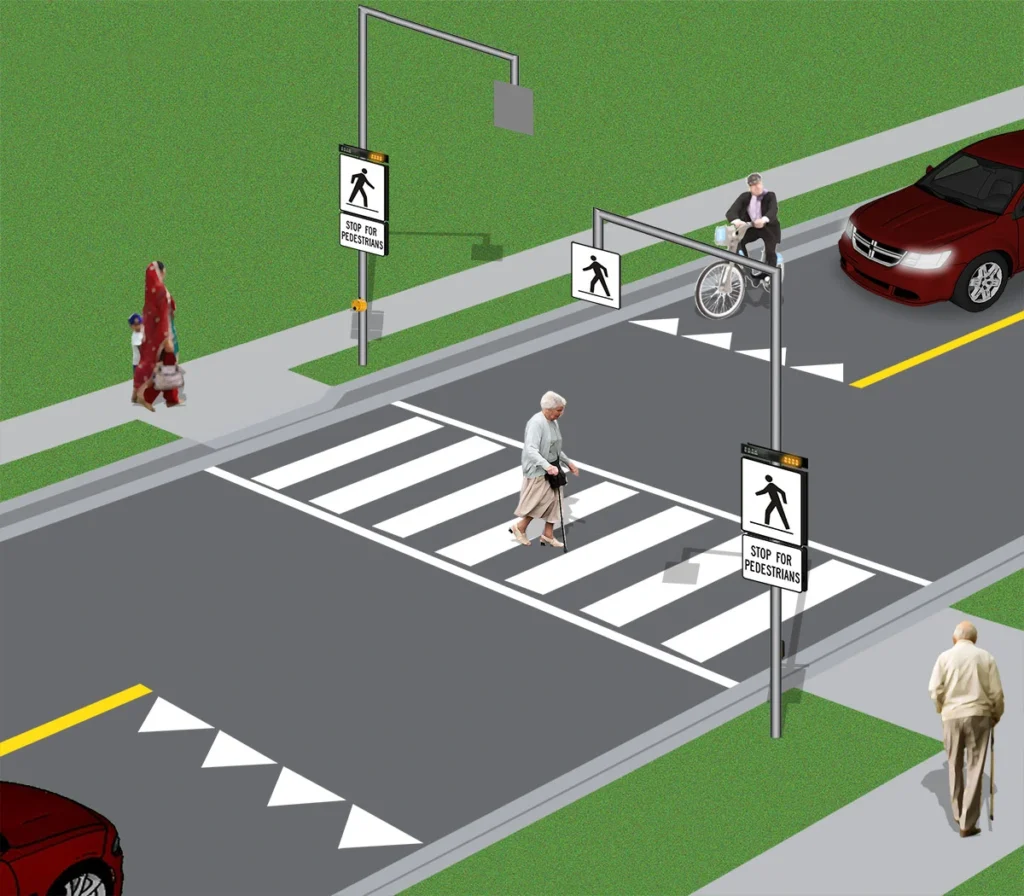It is important to prioritize pedestrian safety when stopping for pedestrian crossings. Pedestrian crossings are marked areas where pedestrians can cross the road.
They serve as crucial points for drivers to exercise heightened vigilance and to adhere to traffic laws.
Importance of pedestrian crossings
The pedestrian crossings are designed to provide a safe route for pedestrians while also highlighting their right of way. It is not only a legal requirement for drivers to stop completely when approaching these marked areas, but also a responsibility based on morality and safety. By stopping at pedestrian crossings, drivers can ensure that pedestrians can cross the road safely and without having to worry about their safety. This promotes the peaceful coexistence of motor vehicles with pedestrians.
Stopping for pedestrian crossings is fundamentally rooted in traffic laws that prioritize safety. Different jurisdictions require pedestrian crossings and have specific driving rules at those locations. Drivers must be mindful of these rules and follow them, or they may face legal penalties and, worse, endanger the safety of pedestrians.
Stopping pedestrian crossings is more than just a matter of following traffic laws. It reflects an effort to foster a shared culture on the roads. Pedestrian safety is a concern shared by drivers and pedestrians. This requires a cooperative effort from both parties. Drivers can actively create an environment that encourages pedestrians to feel safe when using these zones for navigating roadways by stopping at crossings.
Stopping for pedestrian crossings stems from the knowledge that they are more than painted lines. The crossings represent a mutual contract, recognizing the vulnerable nature of pedestrians and the driver’s responsibility to give way. Stopping becomes a symbol of respect and consideration between drivers, creating a community atmosphere on the roads where everyone’s well-being is respected.
Pedestrian crossings are placed strategically at places where there is a lot of foot traffic, like intersections, school zones, or high-traffic areas. In densely populated cities, where coexistence between different modes of transport is an everyday reality, it is crucial to recognize and respect these crossings. In such an environment, stopping for pedestrian crossings is a sign of a driver’s patience and ability to navigate shared spaces.
It is important to stop for pedestrian crossings during times of high pedestrian traffic, like school hours and busy urban rush hour. These crossings are frequented by children, the elderly, or people who have mobility issues. This requires extra caution as well as adherence to the right of way. The drivers must be aware of the pedestrians and anticipate their movements, allowing them enough time to safely cross.

Stopping pedestrian crossings is not only a legal requirement but also aligns itself with wider initiatives to improve road safety. Signage, education campaigns, and other public awareness initiatives continue to emphasize the importance of stopping at designated pedestrian crossings. The messages are meant to be internalized by drivers, who should see stopping at these crossings as not only an inconvenience but also a proactive way to protect vulnerable road users.
Technological advancements support stopping pedestrians at crosswalks. Driver assistance technologies such as pedestrian detection, collision avoidance, and advanced driver assist systems provide additional protection. The systems alert drivers in real-time about pedestrians at crossings and reinforce the need to stop. Integration of technology in driving reinforces commitment to innovation and road safety.
Conclusion
Stopping for pedestrian crossings transcends the legal requirements and represents a shared responsibility in road safety. This practice represents a peaceful relationship between pedestrians and drivers, recognizing the vulnerable nature of the latter and their role in making sure they are safe. Stopping at pedestrian crossings is the cornerstone of responsible driving. It contributes to a road environment characterized by respect and shared responsibility, as well as a commitment to all road users’ safety.
